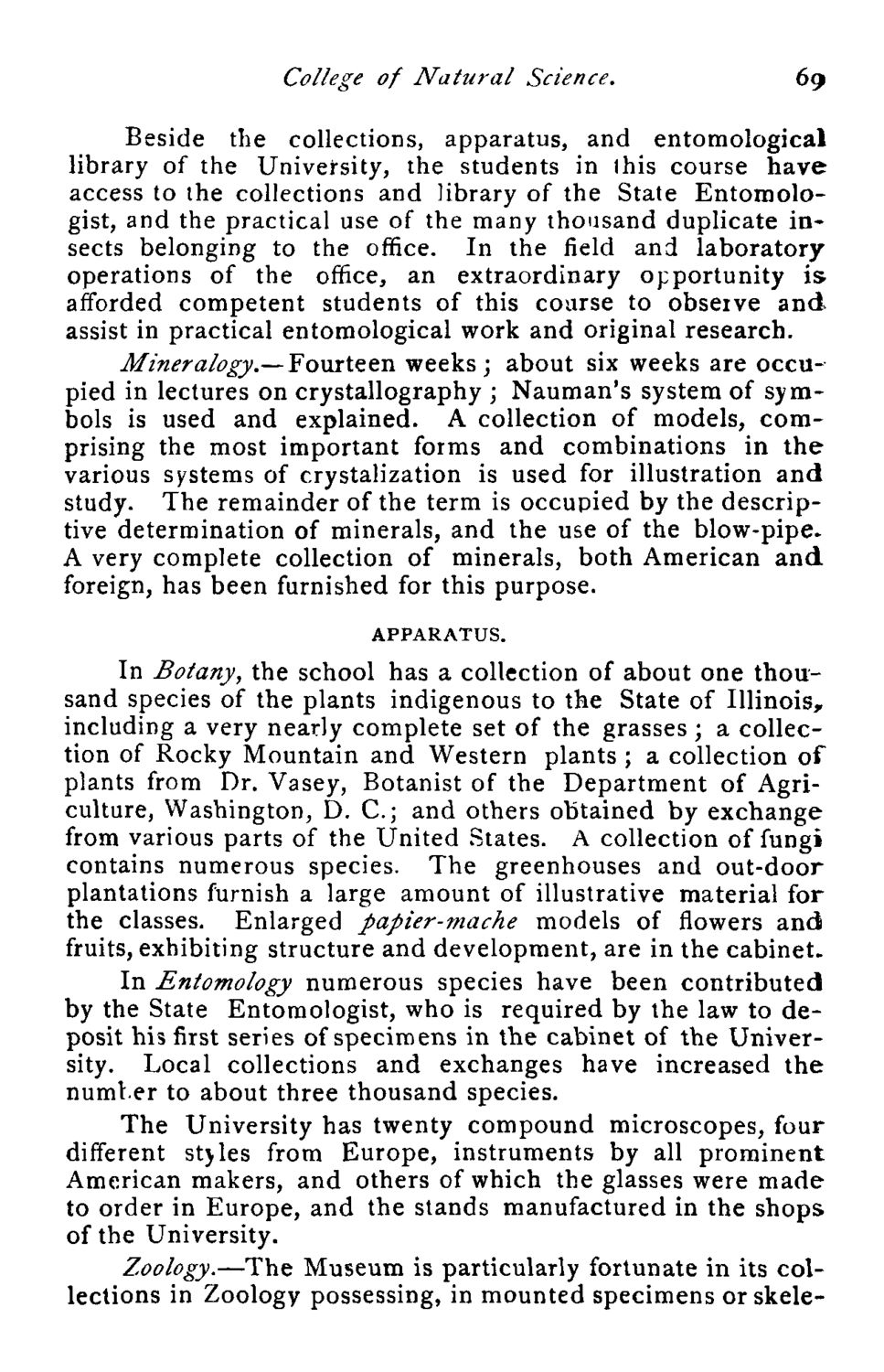| |
| |
Caption: Course Catalog - 1884-1885
This is a reduced-resolution page image for fast online browsing.

EXTRACTED TEXT FROM PAGE:
College of Natural Science. 69 Beside the collections, apparatus, and entomological library of the University, the students in (his course have access to the collections and library of the State Entomologist, and the practical use of the many thousand duplicate insects belonging to the office. In the field and laboratory operations of the office, an extraordinary opportunity is afforded competent students of this coarse to obseive and assist in practical entomological work and original research. Mineralogy.— Fourteen weeks; about six weeks are occupied in lectures on crystallography ; Nauman's system of symbols is used and explained. A collection of models, comprising the most important forms and combinations in the various systems of crystalization is used for illustration and study. The remainder of the term is occupied by the descriptive determination of minerals, and the use of the blow-pipe. A very complete collection of minerals, both American and foreign, has been furnished for this purpose. APPARATUS. In Botany, the school has a collection of about one thousand species of the plants indigenous to the State of Illinois, including a very nearly complete set of the grasses ; a collection of Rocky Mountain and Western plants ; a collection of plants from Dr. Vasey, Botanist of the Department of Agriculture, Washington, D. C.; and others obtained by exchange from various parts of the United States. A collection of fungi contains numerous species. The greenhouses and out-door plantations furnish a large amount of illustrative material for the classes. Enlarged papier-mache models of flowers and fruits, exhibiting structure and development, are in the cabinet. In Entomology numerous species have been contributed by the State Entomologist, who is required by the law to deposit his first series of specimens in the cabinet of the University. Local collections and exchanges have increased the numl.er to about three thousand species. The University has twenty compound microscopes, four different styles from Europe, instruments by all prominent American makers, and others of which the glasses were made to order in Europe, and the stands manufactured in the shops of the University. Zoology.—The Museum is particularly fortunate in its collections in Zoology possessing, in mounted specimens orskele-
| |